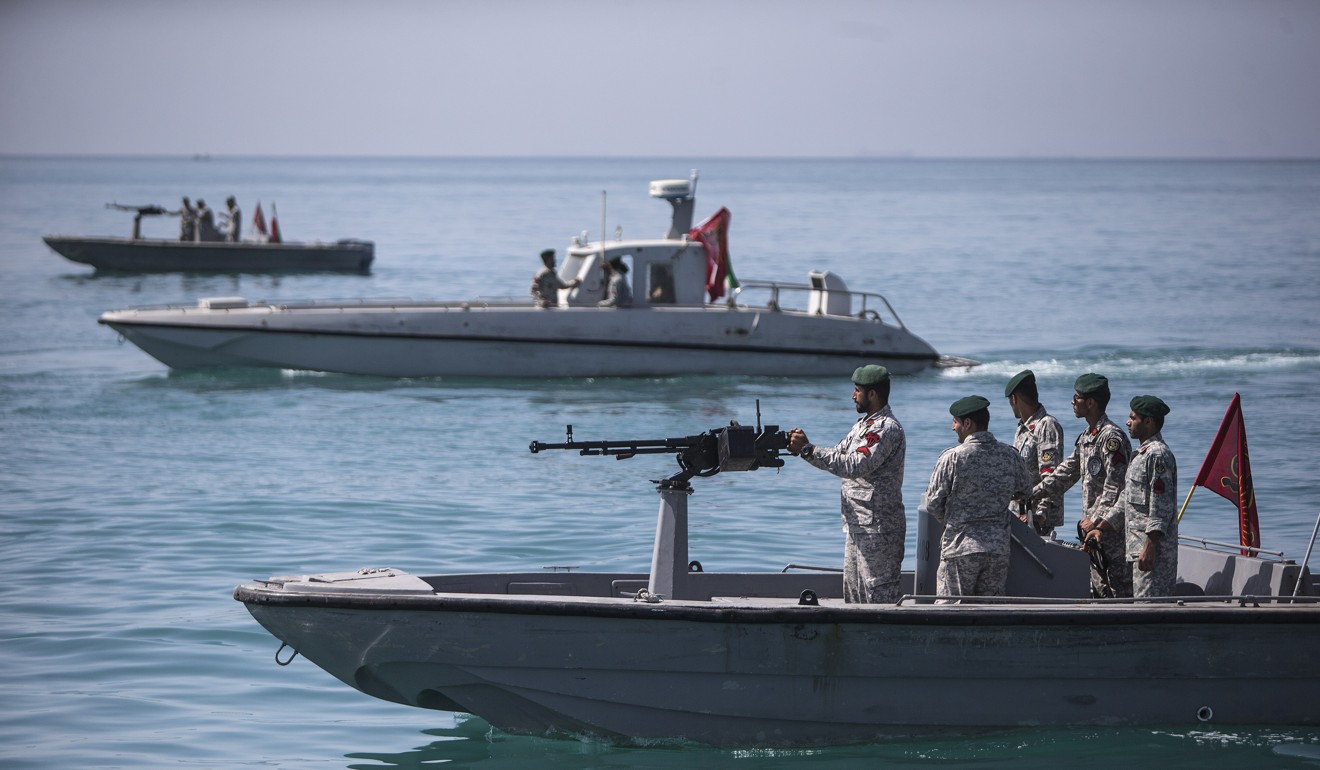
War fears mount as US deploys bombers and carrier strike group to counter Iran ‘threat’
- Trump administration accelerates deployment of an aircraft carrier strike group and other military resources to the Middle East
- British general takes issue with Washington’s alarms over an imminent danger posed by Tehran to the US and its allies
International worries that the Trump administration was sliding toward war with Iran have flared into the open amid scepticism about its claims that the Islamic Republic poses a growing threat to the US and its allies in the Persian Gulf and beyond.
The US military rebutted doubts expressed by a British general about such a threat.
US President Donald Trump denied a report that the administration has updated plans to send more than 100,000 troops to counter Iran if necessary. But Trump then stirred the controversy further by saying: “Would I do that? Absolutely”.
The British general’s remarks exposed international scepticism over the American military build-up in the Middle East, a legacy of the 2003 invasion of Iraq that was predicated on false intelligence.
US officials have to date not provided any evidence to back up claims of an increased Iranian threat even as an ally general took the extraordinary step of publicly challenging the Trump administration.
“No, there’s been no increased threat from Iranian-backed forces in Iraq and Syria,” said Major General Chris Ghika, a senior officer in the US-backed coalition fighting Islamic State.
Ghika, speaking in a video conference from coalition headquarters in Baghdad, told reporters at the Pentagon that the coalition monitors the presence of Iranian-backed forces “along with a whole range of others because that’s the environment we’re in”.

But he added: “There are a substantial number of militia groups in Iraq and Syria, and we don’t see any increased threat from any of them at this stage.”
In a rare public rebuttal of an allied military officer, US Central Command said Ghika’s remarks “run counter to the identified credible threats” from Iranian-backed forces in the Mideast.
In a written statement, Central Command said the coalition in Baghdad has increased the alert level for all service members in Iraq and Syria.
Saudi Arabia shuts major oil pipeline after Yemen’s Iran-backed Houthi rebels launch drone attacks
“As a result, (the coalition) is now at a high level of alert as we continue to closely monitor credible and possibly imminent threats to US forces in Iraq,” the statement said.

At the White House, Trump, who has repeatedly argued for avoiding long-term conflicts in the Mideast, discounted a New York Times report that the US has updated plans that could send up to 120,000 troops to counter Iran if it attacked American forces.
“Would I do that? Absolutely,” he told reporters.
“But we have not planned for that. Hopefully we’re not going to have to plan for that. If we did that, we’d send a hell of a lot more troops than that.”
Reinforcing Trump’s denial, Secretary of State Mike Pompeo said at a joint news conference in Sochi with Russian Foreign Minister Sergey Lavrov: “We fundamentally do not seek war with Iran”.

A Trump administration official said a recent small meeting of national security officials was not focused on a military response to Iran, but instead concentrated on a range of other policy options, including diplomacy and economic sanctions.
Lavrov said Pompeo told him that a potential deployment of 120,000 US troops to the Middle East was only a “rumour”.
Lavrov said the international community needs to focus on diplomacy with Iran, including on the potentially explosive issue of Iran’s nuclear programme, which is constrained by a US-brokered deal in 2015 that Trump has abandoned.
US Iran envoy Brian Hook told reporters travelling with Pompeo in Brussels that the secretary of state shared intelligence on Iran with allies since “Europe shares our concerns about stability in the Gulf and the Middle East”.

What the Europeans do not share, however, is Washington’s more aggressive approach to Iran.
“We are very worried about the risk of a conflict happening by accident, with an escalation that is unintended really on either side but ends with some kind of conflict,” British Foreign Secretary Jeremy Hunt told reporters in Brussels on Tuesday.
Last week, US officials said they had detected signs of Iranian preparations for potential attacks on US forces and interests in the Middle East, but Washington has not spelt out that threat.
The US has about 5,000 troops in Iraq and about 2,000 in Syria as part of the coalition campaign to defeat Islamic State there.
It also has long had a variety of air and naval forces stationed in Bahrain, Qatar and elsewhere in the Gulf, partly to support military operations against IS and partly as a counter to Iranian influence.
General Ghika’s comments came amid dramatically heightened tensions in the Middle East.
The US in recent days has ordered the USS Abraham Lincoln aircraft carrier strike group to the Gulf region, plus four B-52 bombers.
It also is moving a Patriot air-defence missile battery to an undisclosed country in the area.

A US military team was sent to the UAE to investigate, and one US official said the initial assessment was that each ship has hole in it, near or just below the water line.
The official said the early interpretation is that the holes were caused by explosive charges.
The team’s initial assessment is that the damage was done by Iranian or Iranian-backed proxies, but they are still going through the evidence and have not yet reached a final conclusion, the official said.

